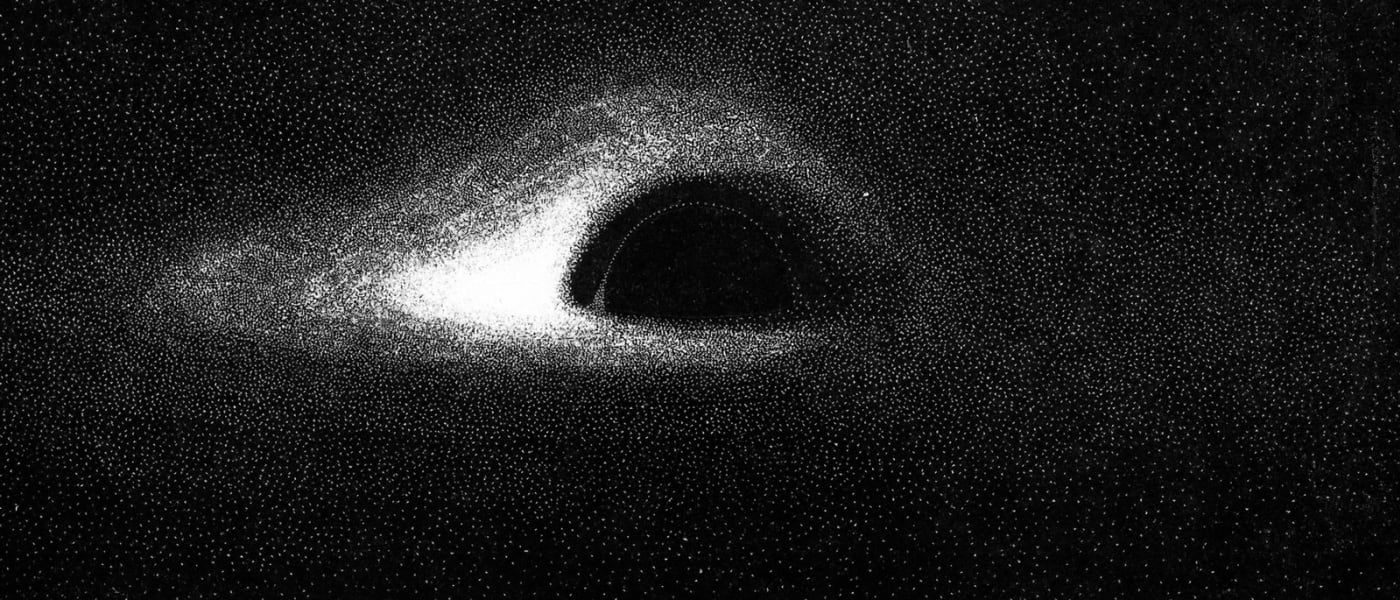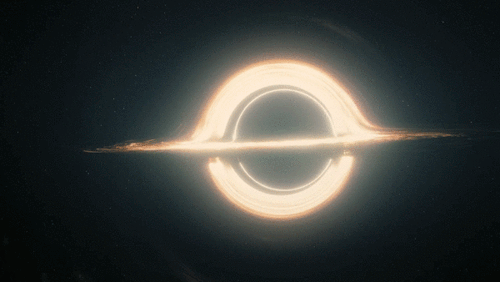Black holes are so
outlandish that the scientists who first thought them up figured they
couldn't possibly exist in reality. They form from massive, collapsed stars and
are so dense that nothing can escape their gravitational pull, including light.
Black holes mess with spacetime so badly that scientists have long wondered:





How do these things look, exactly? We may be on the
cusp of seeing
one thanks to the Event
Horizon Telescope, but back in 1979, Jean-Pierre Luminet created the
first "image" using nothing but an early computer, lots of math and
India ink. The problem with imaging a black hole is that, by definition, they
don't emit light or radiation.
Luckily, large black holes are usually next to other
stars and suck away their matter, something astronomers can see.

"As [gases from stars] fall towards the black hole, it becomes hotter and hotter and begins to emit radiation. This is a good source of light: the accretion rings shine and illuminate the central black hole," writes Luminet in his e-Luminesciences blog.
The distinguishing feature of a black hole is its "event horizon"
boundary, the point of no return for matter and light.
At its periphery, materials sucked in from adjacent
stars form an "accretion disk," famously depicted in Interstellar (below)
as two bright, perpendicular disks. That's just an illusion, though -- there's
only one disk at the equator, but the light is bent upward by the black hole's
extreme gravity (via gravitation
lensing).
Luminet's image depicts two other important
phenomena not seen in Interstellar. One is the fact that the energy
and light are stronger near the edge of a black hole and weaker farther out.
Another is the Doppler and Einstein effects caused by the accretion disk's
rotation, which would make light appear to be brighter on one side, depending
on the spin direction. In Luminet's image, the accretion disk spins
counter-clockwise, so its light approaches the viewer on the left and recedes
on the right, making the left-hand side look brighter.
All that causes the black hole to be much brighter
in the center and left, as depicted in Luminet's image, but not on the
"Gargantua" black hole created by Interstellar's effects
team.
"A realistic image must show a strong asymmetry of the disk's brightness, so that one side is far brighter and the other is far dimmer," he says. (Interstellar's black hole expert Kip Thorne was very aware of that, but director Christopher Nolan left it out so as not to confuse the audience.)
Luminet calculated all of that back in 1979 using
the IBM 7040 mainframe, an early transistor computer with punch card inputs.
The machine generated isolines for his image that were "directly
translatable as smooth curves using the drawing software available at the
time," he told Engadget in an email.
To create the final image though, he relied on his
other passion: art.
Using numerical data from the computer, he drew directly on negative image
paper with black India ink, placing dots more densely where the simulation
showed more light. “Next, I took the negative of my negative to get the
positive, the black points becoming white and the white background becoming
black.”
The result is an image that still holds up and is
closer to reality than the CGI done by Interstellar's whiz kids.
What's more, subsequent computer simulations created by NASA Goddard and
others still show the same defining elements -- a thin "photon ring"
at the center, Doppler and Einstin-shifted light and a double accretion disk
caused by gravitational lensing. Not bad for someone with just punch cards and
India ink.
Comments
Post a Comment